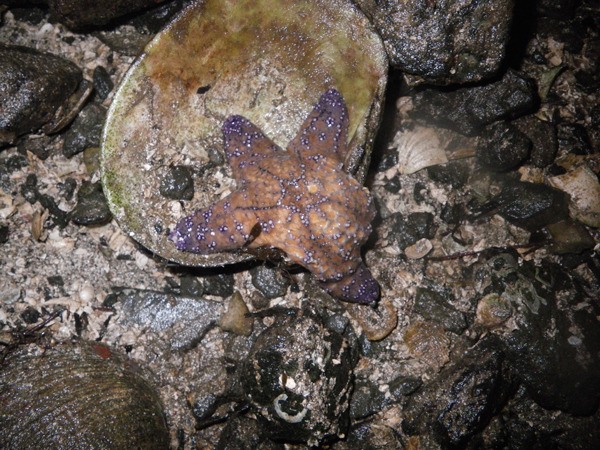Local sea stars appear to be recovering from last year’s epidemic Seastar Wasting Syndrome, according to local researchers monitoring marine life at Indian Island and Fishing Bay.
“Every summer, inter-tidal sea star numbers peak in June for spawning, then fall sharply as sea stars return to deeper, cooler waters to escape the heat,” says Russel Barsh of Kwiaht, sponsor of the six-year-old Indian Island Marine Health Observatory. “During last year’s epidemic, Ochre Stars peaked at 703 in June then fell to 97, and at one point in July nearly half of them showed symptoms of SWS. This year the peak was 369 sea stars, numbers fell to 112 by the beginning of August, but no more than 8 percent of the animals we examined were symptomatic.”
Researchers and volunteers also noted a large proportion of younger, smaller Ochre Stars in 2015, which Barsh says is consistent with the beginning of a recovery.
While Ochre Stars are no longer dying at the rates observed in 2014, it may take several years for numbers to return to pre-SWS levels, Barsh adds. He notes that while Ochre Stars have been the most abundant starfish at Indian Island and were most affected by SWS, other species of sea stars have been declining at Indian Island since monitoring began in 2010. The reasons for their decline are uncertain but may include pollution and rising summer water temperatures. Increasing numbers of visitors to Indian Island, which have doubled over the last two years, may also be a factor. Kwiaht volunteers now ask visitors not to handle any sea stars. Kwiaht scientists and volunteers will survey Indian Island sea stars one more time this summer, and again during nighttime low tides in January and February.



